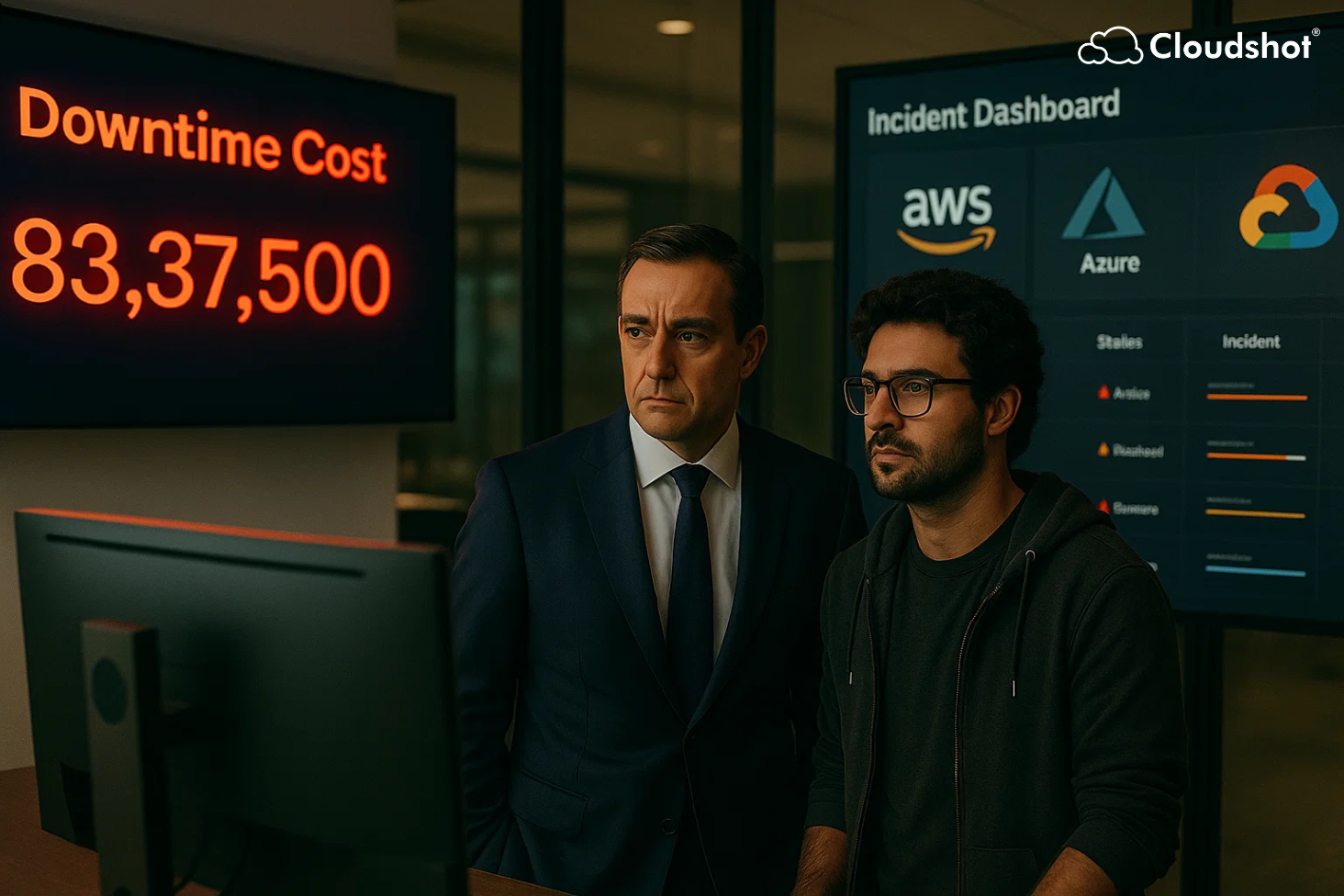In the middle of a quarterly review, a CTO told us something that made the room go quiet:
"Every hour of downtime costs us $150,000 — and we once spent 9 hours finding the root cause."
The engineers were talented. The systems were sophisticated. But in a sprawling multi-cloud environment, the diagnosis process was a maze. By the time the problem was fixed, the cost had ballooned — lost revenue, SLA penalties, and frustrated customers.
This is the unspoken cost of slow incident response. And it's hitting multi-cloud organizations harder than ever.
Why Multi-Cloud Makes Incidents Harder — and More Expensive
Operating in a single cloud is challenging enough. Add AWS, Azure, and GCP into the mix, and you multiply complexity at every stage of incident management.
1. Scattered Monitoring and Dashboards
In most organizations, AWS logs live in one tool, Azure metrics in another, GCP alerts somewhere else entirely. When something breaks, engineers have to manually correlate data from multiple dashboards — burning valuable time.
2. Dependency Blind Spots
Modern systems are deeply interconnected. If a single microservice or database goes down, its effects ripple across multiple applications. But without a unified map of dependencies, teams waste hours just figuring out which component actually failed.
3. Delayed Escalations
The longer it takes to understand the scope and impact of an incident, the longer it takes to involve the right people. By the time CXOs are looped in, the damage is often done — customers are affected, costs have climbed, and reputational risk is mounting.
How Cloudshot Cuts Incident Response Time by Up to 80%
Cloudshot was designed to give organizations one thing: instant clarity in moments of chaos. Instead of scattered, reactive firefighting, Cloudshot turns incident response into a coordinated, data-driven process.
✅ Live Visual Stack Mapping
See every component of your AWS, Azure, and GCP architecture on a single, real-time map. When something fails, Cloudshot shows exactly where — and what's connected to it — so engineers can isolate and address the root cause within minutes.
✅ Role-Based Root Cause Views
Cloudshot doesn't just give one generic view for everyone.
CXOs see the business impact.
DevOps sees the technical fault.
Finance sees the cost exposure.
This alignment means fewer status calls and faster, more confident decision-making.
✅ Smart Alerts with Context
Cloudshot alerts don't just say "something's wrong". They say what's wrong, who owns it, and how to fix it. This context cuts the guesswork and accelerates handoffs between teams.
The Business Case for Faster Incident Response
It's easy to think of downtime as an IT problem. In reality, it's a business problem with real financial impact.
- Revenue Loss: Every hour of outage can translate into tens or hundreds of thousands in lost sales.
- SLA Penalties: Service credits and penalties can eat into margins quickly.
- Customer Churn: Users remember bad experiences far longer than good ones.
- Team Burnout: Repeated late-night "war rooms" take a toll on morale and retention.
One Cloudshot customer — a global SaaS platform — reduced their average outage from 6 hours to under 45 minutes in the first month of deployment. The cost savings were immediate, but the cultural shift was just as valuable:
"We stopped pointing fingers and started fixing problems faster."
Why CXOs Should Care
Incident response isn't just about uptime — it's about trust. The trust your customers have in your product. The trust your board has in your leadership. The trust your teams have in each other.
With Cloudshot, you don't just respond to incidents faster. You lead them.
If your multi-cloud incidents still end in long, expensive firefights, it's time to change the game.
